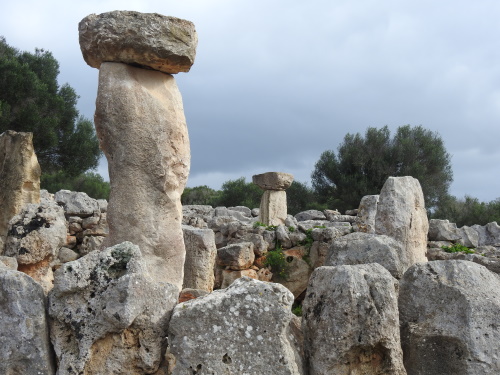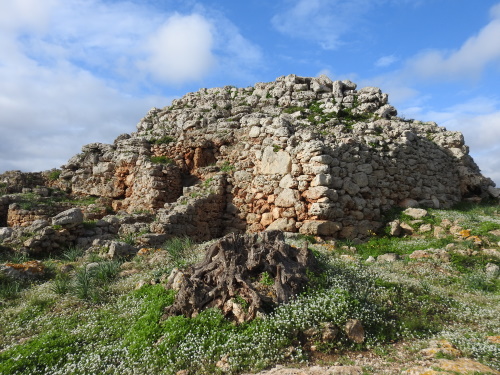Blog TWHS Visits
Talayotic Minorca
Talayotic Minorca is Spain's submission for 2022. The revised documents are now available from the excellent nomination website. They’ve even added an Epic Subtitle: “Talayotic Menorca - A cyclopean island odyssey”. The 25 locations have been decreased to 9, but that’s just a cosmetic adjustment as the former locations are now bundled into clusters. Only the Torre del Ram near Ciutadella has not survived the cut. As far as I can see all suggestions made by ICOMOS during the Deferral of 2017 have been incorporated. All but one that is: the Necropolis at Son Real on the neighboring island of Mallorca has not been included. The Minorcans seem to want a WHS all for themselves! The process has cost 1 million EUR already.
None of the sites lie particularly convenient to be explored by public transport. The best ones for that would be Trepuco (cluster 8), about 3km from the nearest bus stop in Mahon, and Torralba d’en Salort (cluster 6) which lies about 4km from Alaior. One could also take a taxi to one of the sites and then walk back. Menorcaarqueologica does offer guided hiking along some of the sites with an archeologist. In the end, I choose to rent an e-bike for the day from bikemenorca. The distances between the sites in the southeast of Minorca are perfectly suitable for cycling.
My visit didn’t get off to a good start: I sped past the turnoff to Talati D’Alt (not signposted from the ME12). And Torralba d’en Salort I found closed and fenced off. I then just continued to Alaior, where I had my lunch break planned as it is the only larger town in the area.
Fortunately, the next Talayotic site on my list, Torre d’en Galmes, was open. There were even 2 cars of other visitors at the parking lot. In the winter season, the entrance isn’t manned, so I didn’t have to pay for a ticket. The site is easy to visit under your own steam, with information panels to explain what you’re looking at. The remains of the settlement spread out downwards from a hilltop, where numerous circular dwellings can be seen (to me they looked similar to the ones at Su Nuraxi di Barumini). The enclosed dwellings had an efficient water catchment system, where rainwater was saved in cisterns.
There were different “rooms” within the enclosures, including a kitchen and spaces for the sheep and goats. Some were hypostyle rooms: carefully balanced slabs of stone, supported by columns that are narrower at the base than at the top. The structures here at Torre d’en Galmes, as at most Talayotic sites, span a long period. Some were inhabited up and until the Moorish era.
I cycled some 45 kilometers in total. It was quite windy and less flat than I had hoped. On the way back to Mahon, where I was staying overnight, I visited two more sites. So Na Caçana stands out as it is thought to have been a ceremonial center. The difference between it and a settlement isn’t visible however to the untrained eye. Its most impressive feature is the tall, quadrangular Talayot (watchtower) dating back to the 8th century BC. Trepuco lies on the outskirts of the Minorcan capital Mahon. It has a good example of a T-shaped Taula (a stone structure used in ceremonies). It’s a miracle that the horizontal slab stays in place.
Els - 21 November 2021


